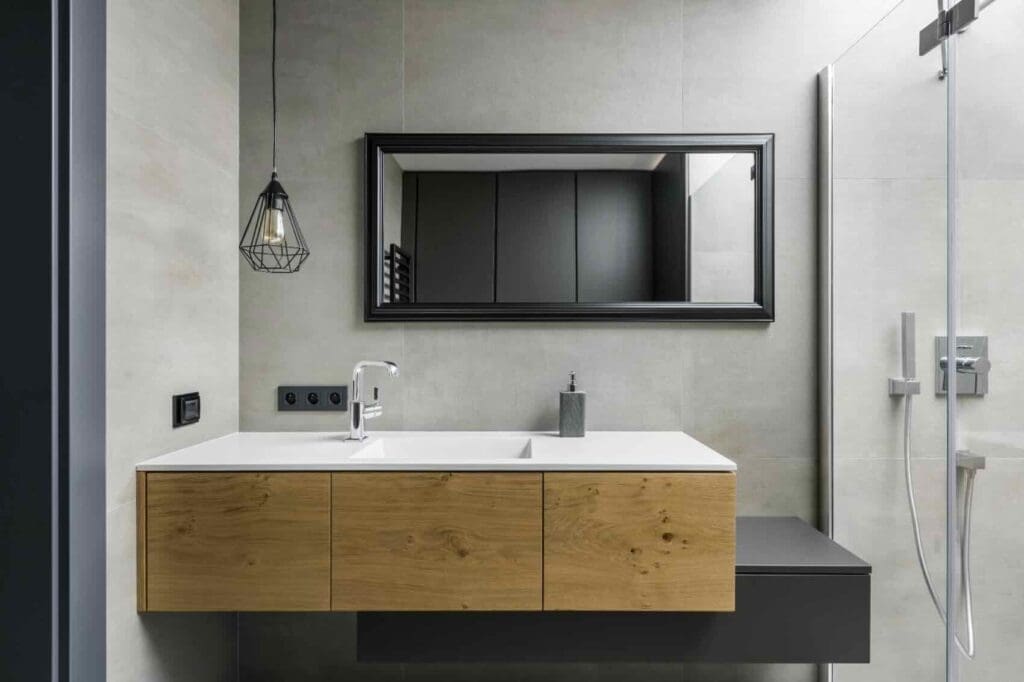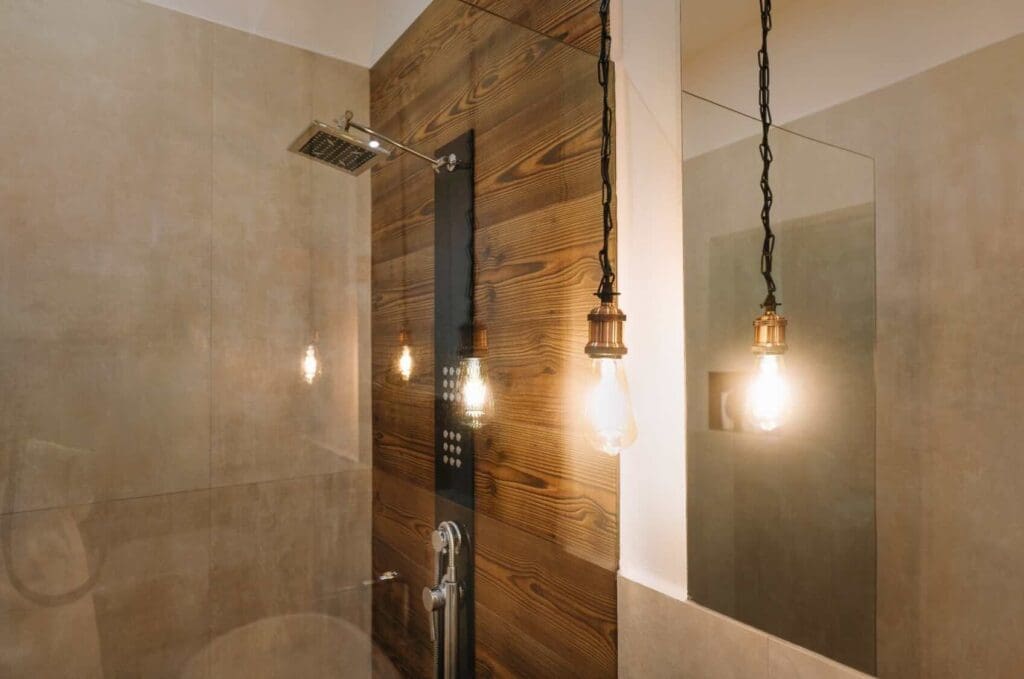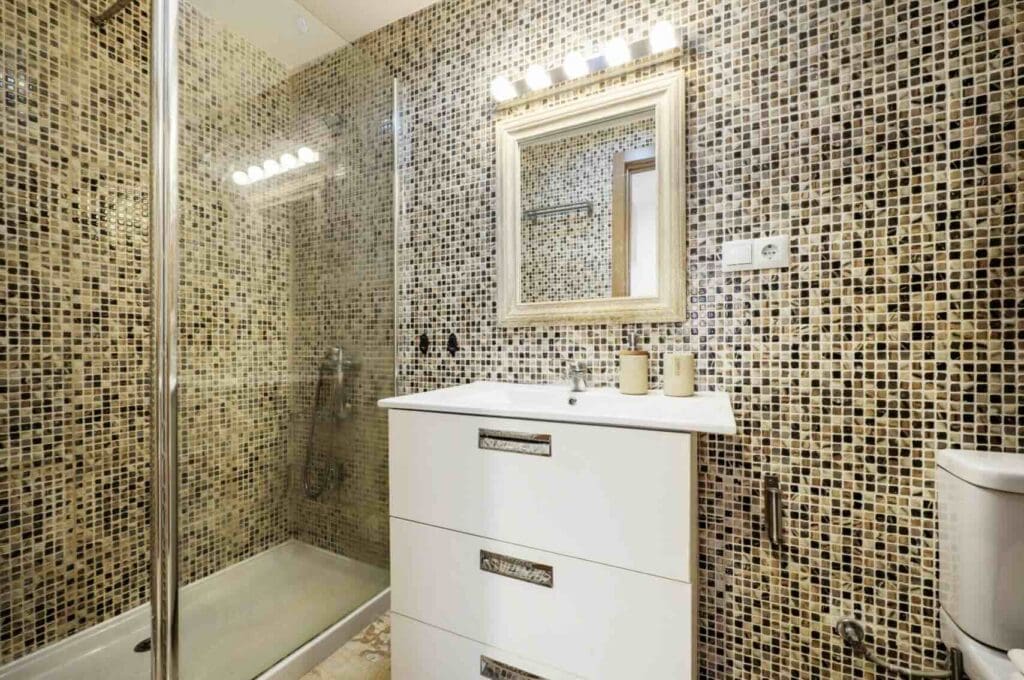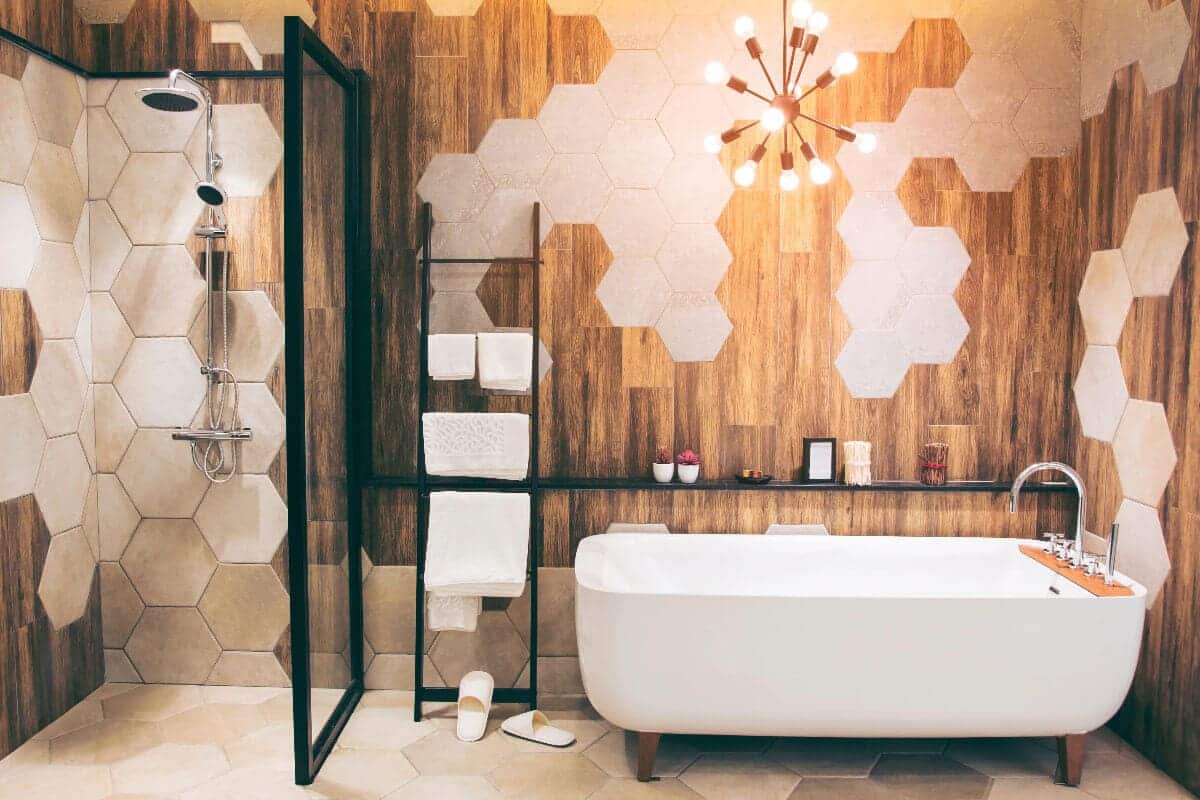Lighting is vital in our daily lives, influencing our mood, productivity, and health. Modern technology has made significant progress in the lighting industry, making it all the more significant for us to stay up-to-date.
From energy efficiency to intelligent automation, the opportunities are vast for selecting the proper illumination for our homes, specifically the bathroom. This discussion delves into the latest innovations in light bulb technology, compares leading bright light bulbs for bathrooms available in the market, and imparts knowledge on the installation and automation of these bulbs.
Table of Contents
- Latest Innovation in Light Bulb Technology
- Comparison of The Brightest Light Bulbs
- Installing and Automating Bathroom Light Bulbs
- Related Content
Latest Innovation in Light Bulb Technology
Unveiling the Latest Technological Advances in Bathroom Light Bulbs
Technology is constantly evolving, paving the way for new and intriguing advancements. Its ever-diversifying applications leave no stone unturned – not even bathroom lighting.
Beyond illuminating your morning routines or late-night trips to the restroom, the last decade has seen a steady shift in bathroom lighting towards energy-efficient, long-lasting, and customizable solutions. Here’s the lowdown on the latest tech-changing bathroom light bulbs as we know it.
Smart LED Bulbs
Leading the pack are Smart LEDs – the energy-conscious choice. They use less electricity and have a longer lifespan than traditional incandescent bulbs, boasting up to 25,000 hours of life expectancy.
Their strength lies in their connectivity; Wi-Fi-enabled smart bulbs can adapt to your lifestyle via smartphone apps or smart home systems. Schedule wake-up times with gradual illumination, alter brightness levels or switch them on automatically when entering the room. Some even offer a gamut of colors for a customizable ambiance that caters to mood or task.
Sensor Technology
Next in line are bulbs with motion-sensor technology. Installed in hallways, entrances, and bathrooms, these innovative bulbs are sensitive to any movement. Their energy-saving prowess is impeccable, as they illuminate only when required. Being touch-free, they also present a sanitary solution amid increasingly germ-conscious households.
Antibacterial Bulbs
In this era of heightened personal hygiene, antibacterial light bulbs emerge as a groundbreaking development. Select ultraviolet (UV) light classes, specifically UVC, have proven effective in sterilizing air, water, and non-porous surfaces. New models incorporate safe UVC-producing LEDs into regular lighting fixtures, offering continuous, unobtrusive sterilization throughout the day.
Biodynamic Lighting
Biodynamic lighting, human-centric or circadian lighting, is another notable tech trend. These bulbs support the human biological clock by adjusting color temperature and brightness in response to natural light patterns. The result? Better sleep, improved mood, and enhanced productivity.
Voice-Controlled Lights
Lastly, the rise of virtual assistants has steered a solid spotlight toward voice-activated lighting. These innovative bulbs are linked to devices such as Alexa or Google Home, allowing controlling bathroom light settings by merely speaking commands, adding a layer of convenience and accessibility in one fell swoop.
Each of these advancements is ushering in a new era for bathroom light bulbs and technology. With so many options, it’s no longer just illuminating a space.
It’s about energy efficiency, health benefits, convenience, and customization. As technology progresses, so will the humble bathroom bulb, transforming it from a simple necessity to an integral part of a modern, smart home.

Comparison of The Brightest Light Bulbs
Harnessing the Light: Exploring the Varieties of High-Intensity Light Bulbs
Building on the extraordinary trends within the residential lighting industry, let’s turn our attention to a realm that garners much fascination from tech enthusiasts: bright light bulbs. This aspect of lighting could appear mundane, but it is far from it.
After all, high-performing bulbs disrupt the nighttime darkness, boost security measures, enable tasks under dim conditions, and work miracles for those with poor vision.
Diving into the depths of the lighting industry, it’s crucial to recognize the role of halogen light bulbs. They have been a constant, trusted resource for high-intensity lighting, primarily because they provide brighter, crisper light than their traditional counterparts, incandescent bulbs.
Halogen technology may not be futuristic, but it certainly delivers when it comes to pure brightness.
However, with such brightness and efficiency comes potential risk. The heat generated by these lights has often been cited as a concern. In response to this issue, manufacturers have engineered these bulbs with enforced safety provisions. Nonetheless, users are encouraged to exercise caution when handling these bulbs, following all safety guidelines manufacturers provide.
On an equally illuminating note, let’s spotlight high-intensity discharge (HID) light bulbs. These bulbs harness the power of arcs of electricity to illuminate spaces brightly. They’re a mainstay in football stadiums, high-ceilinged warehouses, and other environments demanding intense illumination. A subtype of HID bulbs, metal halide lights, has risen in popularity due to its versatility and intensity.
Exciting advancements in LED technology have seen the dawn of high-output (HO) LED bulbs. In the past, the LED domain was unlikely to be associated with extreme brightness. However, with HO LED bulbs, this perception is rapidly changing. These bulbs impressively offer high-intensity light and energy efficiency, packaged in an eco- and user-friendly design.
The journey in lighting innovation doesn’t end here. They are introducing the Xenon arc lamps. These illuminating wonders use ionized xenon gas to produce light closely mimicking natural sunlight, both in spectrum and intensity. While the initial cost of xenon bulbs can be steep, they require less energy and have a longer lifespan, making it an enticing proposition over time.
Each of these high-intensity bulbs brings unique benefits, but it’s essential to make flashlight decisions factoring in the environment, safety considerations, and specific requirements. While Halogen and HID bulbs offer intensity, they require more energy and generate more heat. Meanwhile, HO LED and Xenon arc lamps balance brightness, energy efficiency, and lower heat outputs.
The era of dull, inefficient lighting is over. The technology of the brightest bulbs is nigh, promising to illuminate spaces with precision. The time is ripe for adopting these technologically advanced, high-performing bulbs, irrespective of the need to create aesthetic mood lighting or tasks requiring high-intensity illumination. Indeed, the future is bright—with these groundbreaking lighting options, far brighter than ever.

Installing and Automating Bathroom Light Bulbs
Indeed, the transformative impact of technological advancements is far-reaching and not limited to just your gadgets and devices – it also extends to something as routine as bathroom lighting. In the age of smart home automation, innovative solutions like bathroom lighting automation are gaining new ground.
However, implementing it effectively requires a thorough understanding of the ecosystem of lighting technology.
When you’ve decided to automate your bathroom lighting, the first step involves identifying your lighting needs. Will you mainly use the space for grooming, relaxation, or both? Each of these requires different kinds of light intensity and color, which ultimately determines the type of light bulb you should choose.
Knowledge of the Color Rendering Index (CRI) becomes essential when aiming for maximum light efficiency. It measures the light source’s ability to reveal objects’ actual color compared to a natural light source. A higher CRI value (1-100) implies a better color rendering ability, ideal for grooming routines.
Another point to consider is bathroom safety and compatibility. Not every bulb type suits a potentially humid environment like the bathroom. Here, Bulbs with an ingress protection (IP) rating must be chosen, as they are designed to withstand exposure to moisture and water. It helps maintain the bulb’s longevity and keeps the space safe.
Automating your bathroom also requires you to handle the illumination levels smartly. Dimmer switches give you an edge where you can adjust light intensity according to your needs. They can be paired with most intelligent light bulbs and remotely controlled through a dedicated smartphone app.
Light decay is an inevitable downfall of bulbs, gradually losing brightness over time. LED bulbs are known for their longevity but also suffer from light decay. Thus, the bulb’s efficacy rating (lumens per watt) becomes significant as it helps determine the light output over time. A high efficacy rating will ensure your bulb retains a valuable brightness level for longer.
In the quilt of intelligent lighting, don’t forget the aesthetic coherence. Bathroom lighting should go hand-in-hand with the overall design aspects. Strip lights, wall-mounted fixtures, and recessed lighting are a few examples of lighting types that can augment the visual appeal of a space while fulfilling its practical lighting needs.
In conclusion, automating bathroom lighting is not just about incorporating the bulb with the highest specifications. It’s about understanding the nuances, balancing performance and aesthetics, smartly selecting the ideal light bulb, and integrating them seamlessly into your bathroom.
The technological heights we are achieving today make the task more accessible and achievable. It remains up to the user to leverage these technologies optimally to light up the personal space with brilliance and intelligence.

Understanding the advancements in light bulb technology, their specifications, and how to handle their installation is no easy feat. However, having this knowledge empowers us to make intelligent decisions and maximize the full potential of these fantastic innovations.
By being well-informed, we can select the best and brightest light bulb for our bathrooms that not only brightens the space efficiently but also conserve energy, has an extensive lifespan, and is compatible with smart home systems. So, let’s embrace the future of lighting and turn our bathrooms into spaces of convenience and comfort.
If you want to see how Mondoro can help you with your Ul Certified lamp needs, we would love to talk to you about how we can help you.
Find out more about how Mondoro can help you create, develop, and manufacture excellent home decor and furniture products – don’t hesitate to contact me, Anita. Check out my email by clicking here or become a part of our community and join our newsletter by clicking here.
Mondoro gives out a FREE Lookbook to anyone interested. You can receive a copy of our latest Lookbook by clicking here.
Listen to our Podcast called Global Trade Gal. You can find it on all major podcast platforms. Try out listening to one of our podcasts by clicking here.
Subscribe to our Mondoro Company Limited YouTube Channel with great videos and information by clicking here.
Related Content
What Watt Light Bulb Do I Need? Light Bulb Wattage Explored
Wattage stands out among every light bulb package’s specifications. For many to understand, the wattage can seem too confusing. So, what does the wattage mean on a light bulb? And more importantly, why should we care?
You can discover more by reading What Watt Light Bulb Do I Need? Light Bulb Wattage Explored by clicking here.
Light Bulb Wattage: Stay Safe By Using The Proper Wattage
The correct light bulb wattage is essential to ensure optimal light output for your lamp or lighting fixture. It can help avoid glare, ensure safety, maximize energy efficiency, provide the desired ambiance, enhance color rendering, extend the bulb’s life, and improve the fixture’s longevity. When selecting a bulb, always refer to the manufacturer’s instructions and choose the wattage recommended for your fixture or lamp to maximize your lighting.
You can discover more by reading our blog, Light Bulb Wattage: Stay Safe By Using The Proper Wattage by clicking here.
Why Is Thomas Edison Credited For The Invention Of The Light Bulb?
Thomas Edison did not invent the lightbulb. But he made many profound improvements to the lightbulb concept, so he is usually credited as the inventor of the lightbulb as we know it today. Thomas Edison gave us the shape and design of the light bulb. He also designed and improved the lightbulb socket, making it easier for people to change it.
You can discover more by reading our blog, Why Is Thomas Edison Credited For The Invention Of The Light Bulb? by clicking here.

